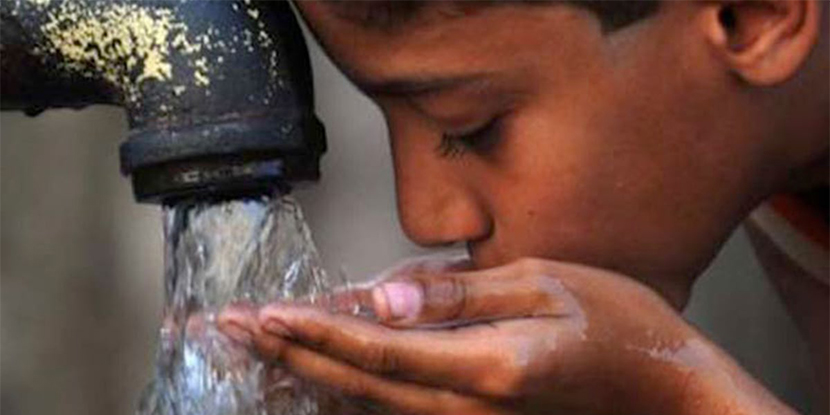Various water-borne diseases contracted from dirty water are caused by drinking and various other uses which is killing Pakistanis. The reason behind 40 percent of deaths every year in Pakistan is the scarcity of clean water.
Pakistan is currently a water-stressed country and is now rapidly becoming a water-scarce country. According to the 2018 world report, 21 million Pakistanis have no access to clean water and that ranks Pakistan in one of the top 10 countries with the lowest access to clean water. No access to clean water is the biggest reason for many waterborne diseases that the countrymen contract every year. According to the World Health Organization, a person requires between 50 to 100 liters of clean water per day to ensure that basic daily needs are met like drinking, washing, and cooking and few health concerns arise.
According to the survey, 80 percent of health concerns occur due to the usage of dirty water in Pakistan. According to the Health Ministry and UNICEF, every year approximately 50,000 children below the age of 10 die due to waterborne diseases.
Many of the diseases are caused by the use of contaminated water and below are 9 water-borne diseases killing people in Pakistan:
Dysentery
Dysentery is another disease among other water-borne diseases: There are two types of dysentery; amoebic dysentery and bacillary dysentery. Amoebic dysentery is caused by any of the amoebae while bacillary dysentery is caused by bacteria. The symptoms are abdominal cramps and nausea which may lead to severe diarrhea. Any of these two types when caused by dirty water, will stay for at least 4 days.
Typhoid
This disease is caused by consuming contaminated water. In this disease, bacteria pass through the intestinal tract and then can be identified by stool samples. Typhoid can be identified by the symptoms of loss of appetite, nausea, and headache.
Arsenicosis
This is one of the killing disease borne by the release of toxic chemicals in lakes or rivers. It causes arsenic poisoning that is consumed through drinking water. This disease causes skin pain called keratosis. This ultimately leads to cancer of the kidney, lungs or bladder.
Polio (infantile paralysis)
It is caused by poliovirus, where an individual suffers from severe fever, seizures and severe headache that finally becomes the real reason for paralysis. This disease directly affects the nervous system. The infection caused by virus passes through water from the feces.
Schistosomiasis
When water is polluted by insects like snails or worms in freshwater and is then consumed causes schistosomiasis. Such insects and worms make water polluted. In rural areas, people use water from wells and running water that is used for recreational purposes and bathing, etc. These worms go inside their bodies and go into the skin of people that affects their liver, intestine, bladder, and lungs.
Trachoma (eye infection)
Trachoma eye infection is caused by bacterium chlamydia trachomatis. This is found in contaminated water. This causes pain in the eyes, cornea and may lead to blindness. It causes because of hygienic problems and poor sanitation.
Cholera
Cholera infection occurs in the small intestine by bacterium vibrio cholera. Its symptoms are diarrhea, nausea, vomiting, abdominal cramps and headache. If it is not treated within hours, an infectious person can die.
Diarrhea
The most common disease in Pakistan. Bacteria and parasites are borne of contaminated water. It causes dehydration and death in children is very common.
Malaria
This disease spread due to female mosquitoes born from water pollution. These mosquitoes infect a person by biting. Its symptoms are high fever, headache and shivering in the whole body. It becomes severe and may lead to coma or death.
Apart from this there are other dangerous water-borne pathogens to watch out;
Vibrio vulnificus
Cyanobacteria
Escherichia coli
Naegleria fowleri
Cryptosporidium
Pseudomonas aeruginosa
Legionella

















